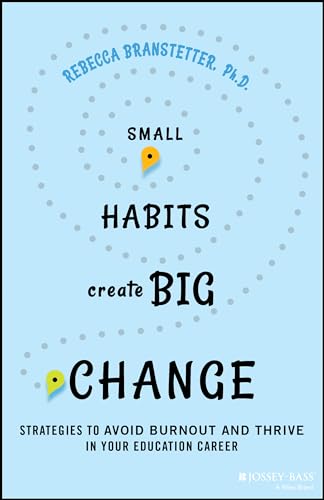[ad_1]
I was huddled beneath my desk on the faculty district office, clutching my pregnant abdomen and hiding from a gunman on campus after I knew.
I knew that I preferred my faculty college students.
I knew that I was obsessed with being a college psychologist.
I knew I was making a distinction inside the lives of kids.
I knew that self-care bubble tub after work was not going to work to keep up me from burning out.
I knew that the prospect of the stressors of being a college psychologist weren’t going to change any time rapidly.
When it was all through, and everyone was safe, I drove home, crying.
I knew that I didn’t want to surrender, nevertheless it felt like quitting was the one reply.
Deep down, I moreover knew that one factor wanted to vary so I’ll thrive inside the career of my needs.
Nevertheless what? How? Was it even doable?
Likelihood is excessive, in case you’ve picked up this e book, you is probably questioning the an identical issue – how can I preserve my passion for my career in education in such tough circumstances? Whereas not everyone has had a dramatic life-threatening second similar to the one I described, you’ve got perhaps had an an identical second of your particular person, driving home in your automotive after a tricky day, questioning if it’s all worth it and the way one can rekindle the enjoyment.
That’s what this e book is about.
Nevertheless first, proper right here’s what this e book is not going to be about: It’s not about you not self-caring adequate. It’s not about blaming you, the students, households, society, or “the system.” It’s moreover not about toxic positivity and pretending it’s not hectic to be an educator. And it’s positively not about sacrificing your well-being and nervous system to your “bigger why.”
It’s about using the neuroscience of wellness and burnout prevention to change what you can and finding out the best way to take care of the remaining. It’s about your particular person improvement and empowerment. Above all, it’s about inspiring hope and offering you with wise devices so you can thrive inside the career of your needs.
How the Information Is Organized
Usually points come into your life correct when you need them.
Paradoxically, the week after the lockdown incident, a author reached out to me and requested me to jot down a e book, known as The School Psychologist’s Survival Data. Ha! The irony! Proper right here I was, on the purpose of quitting and proper right here anyone thought I’ll write a e book on learn how to thrive? The universe is humorous like that.
I seen this as a sign that my work in education was not carried out.
I took the deal and started my me-search (excuse me, RE-search) enterprise on learn how to forestall burnout and thrive in education. I dug into the literature. I interviewed veteran lecturers and college psychologists about what saved them going. And are you conscious what I noticed?
It’s all regarding the small points.
Evaluation vs. Actuality
For lots of educators, the research-to-reality gap in colleges actually really feel similar to the Grand Canyon. Standing on one side, we’re entrenched inside the day by day wrestle. On the alternative side, we see what works for youngsters, what retains us mentally healthful, and what best practices are.
Even after we don’t know exactly or have a analysis citation to indicate it, we’ve got now a felt sense when points are going properly and when points are going off the rails. Nevertheless we’re uncertain learn how to current up on Monday and alter the established order.
We’re in a position to’t even take into consideration the bridge over the opening and the feat it should take to get there. So, we carry on the side of least resistance, wishing we had been on the alternative side. Or we hope anyone will come along with additional funding and staff and assemble us the bridge.
And we wait. Y’all I’ve been prepared for 20 years for reasonable caseloads as a college psychologist. And however, I on a regular basis have additional faculty college students to help than any human might very properly be anticipated to help inside the fictional 40-hour work week of an educator. Isn’t there one thing we are going to do NOW?
We’re in a position to. The neuroscience of wellness and the science of finding out is the invisible bridge we’ve got to perception is there to take us to best practices for youngsters and for ourselves.
Everytime you see that first invisible step flip into apparent, that’s when forward progress begins.
And when you’ve got science to once more up your felt sense of best practices, the ideas and practices purchase traction and credibility.
That’s why this e book is intentionally grounded in 10 science-backed concepts which had been confirmed to boost your wellness and forestall burnout.
Far more thrilling is the hyperlink between your wellness and your faculty college students’ wellness and achievement, an thought I identify “co-thriving.”
So sometimes, tutorial wellness initiatives perform in silos. We now have staff wellness initiatives over proper right here, with a teacher luncheon, staff shout outs in newsletters, or an appreciation week. Then we’ve got now pupil wellness initiatives over there, with psychological properly being corporations, specific training schemes, school-wide social-emotional finding out (SEL) packages, constructive habits intervention applications (PBIS), and all the alternative plethora of acronyms of interventions. Colleges steadily arrange their interventions in a Multi-Tiered
System of Help (MTSS), with Tier 1 helps for all, Tier 2 helps for groups of students who do not reply to Tier 1, and Tier 3 intensive helps for the students with most need.
The actual fact is, not one of many pupil interventions at Multi-Tiered Methods of Help (MTSS) are going to work very properly with out specializing in what I identify “Tier 0,” which is tending to the educators providing all these helps!

[ad_2]
Provide hyperlink
